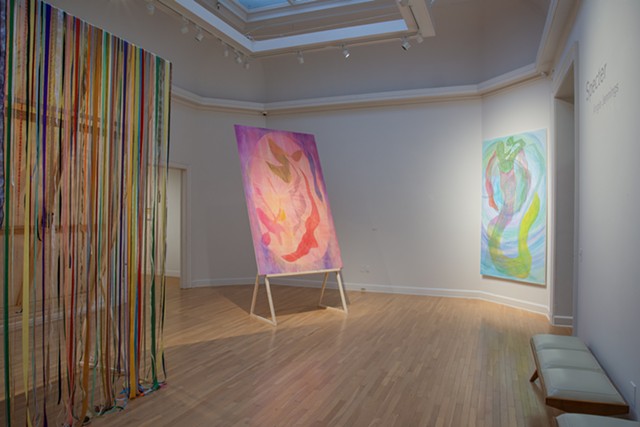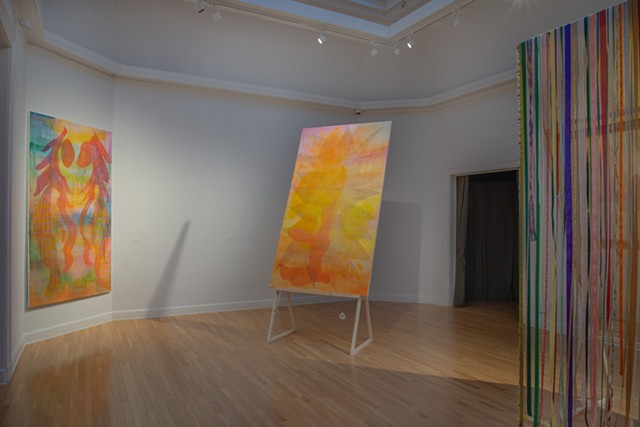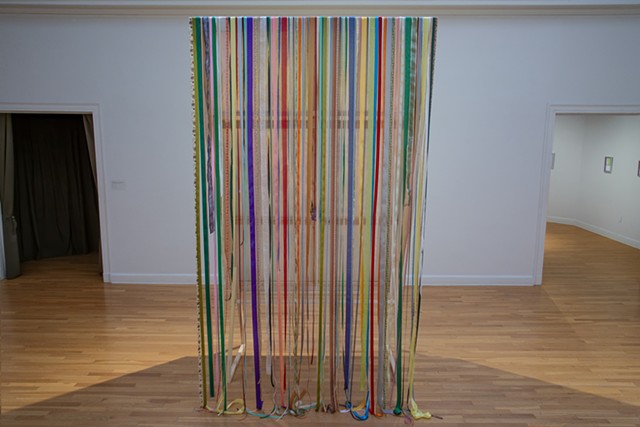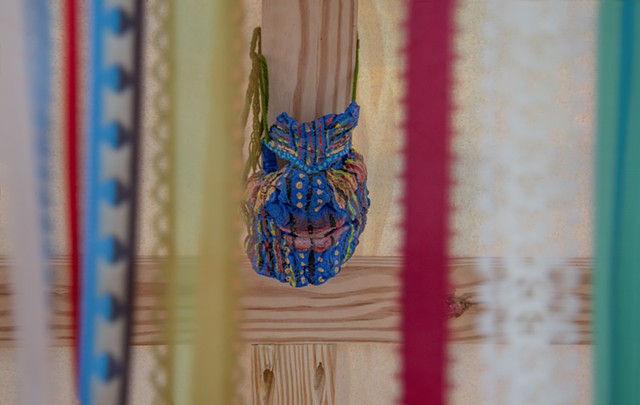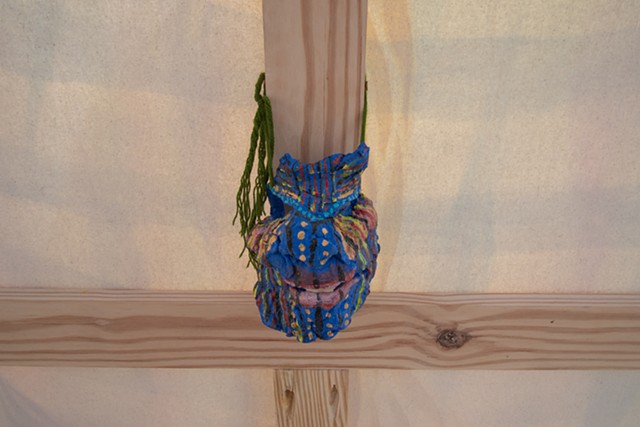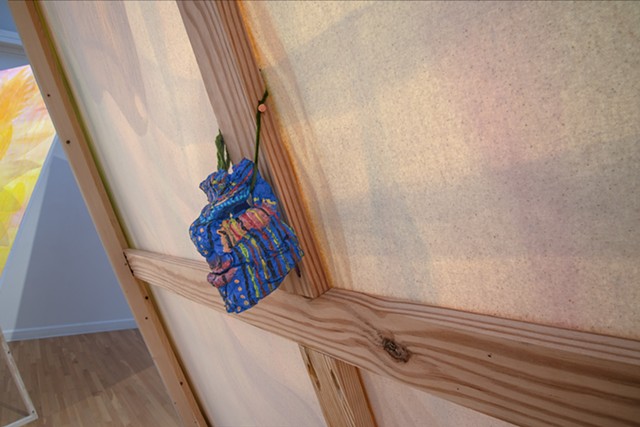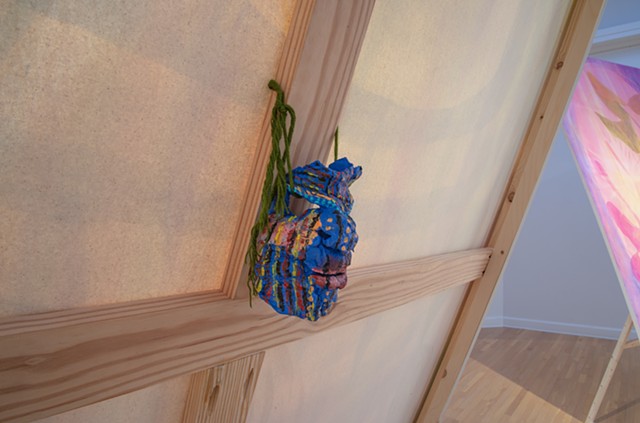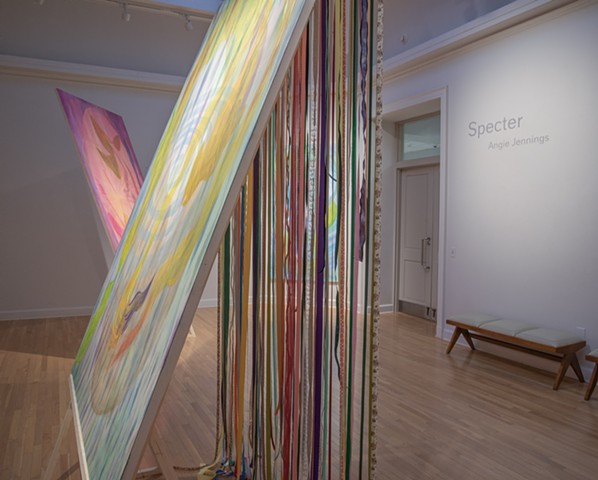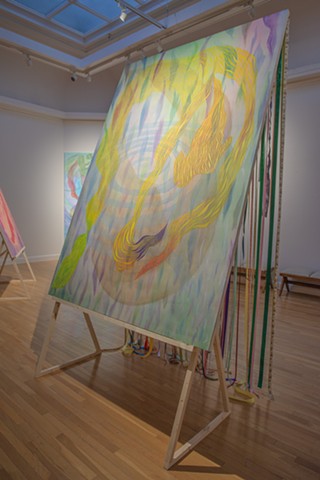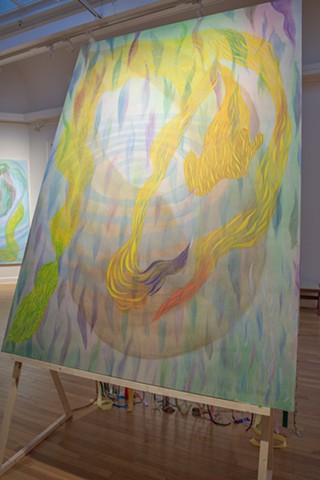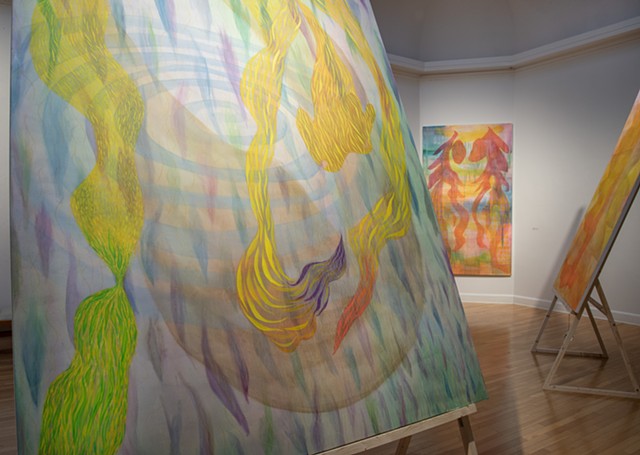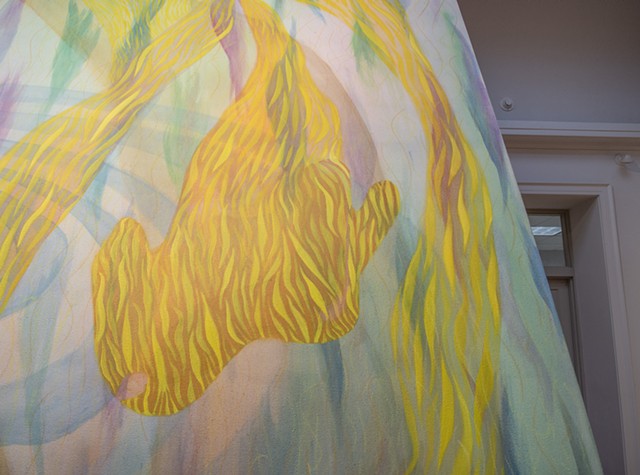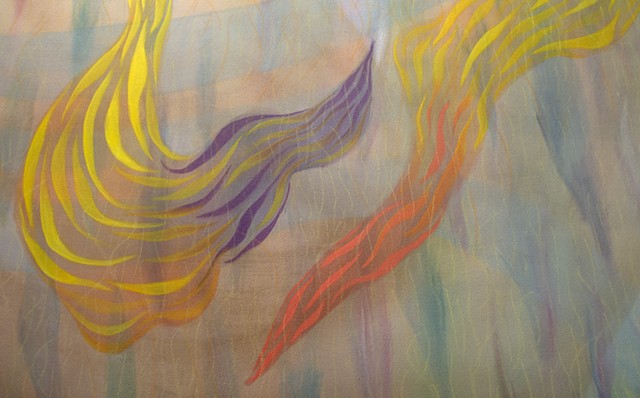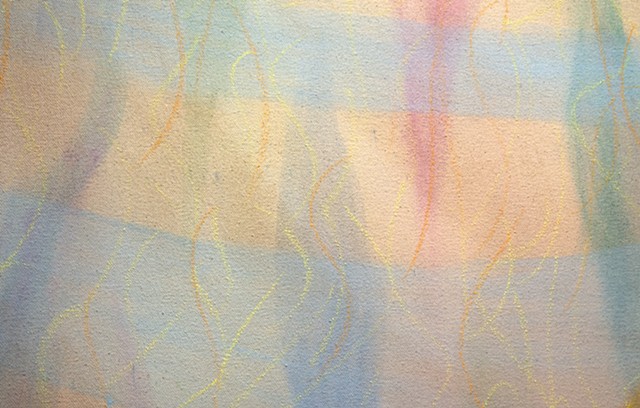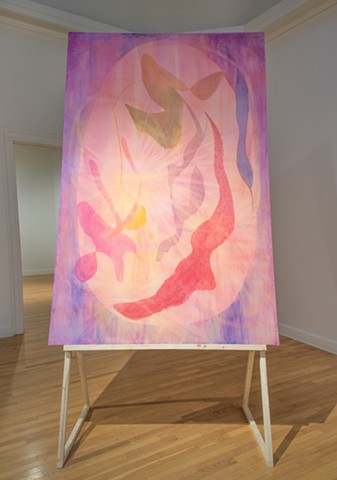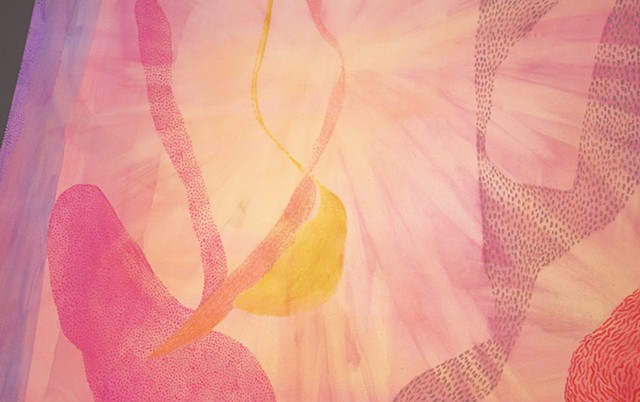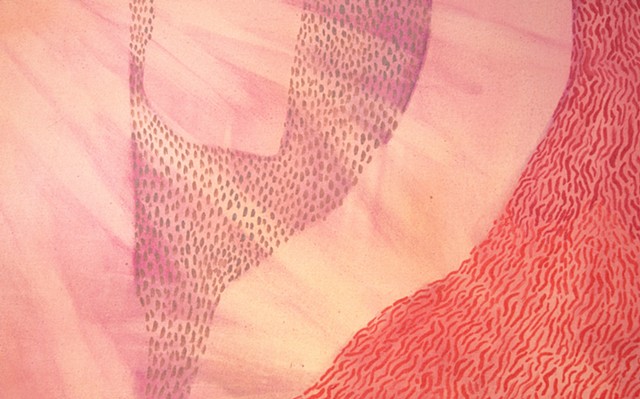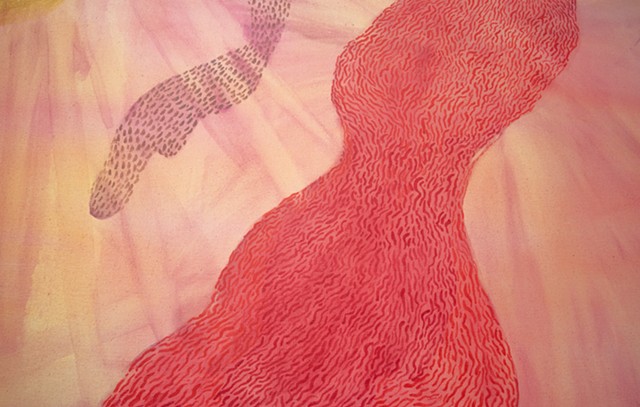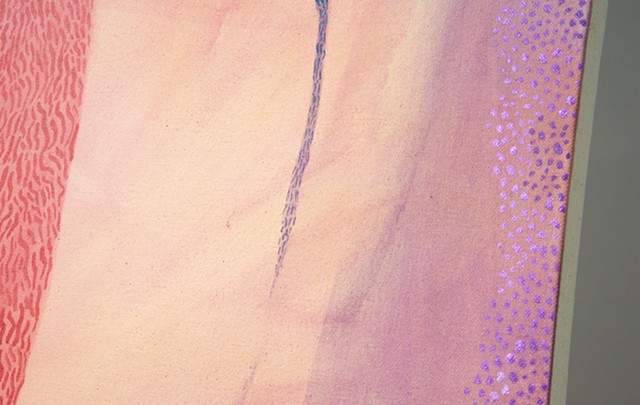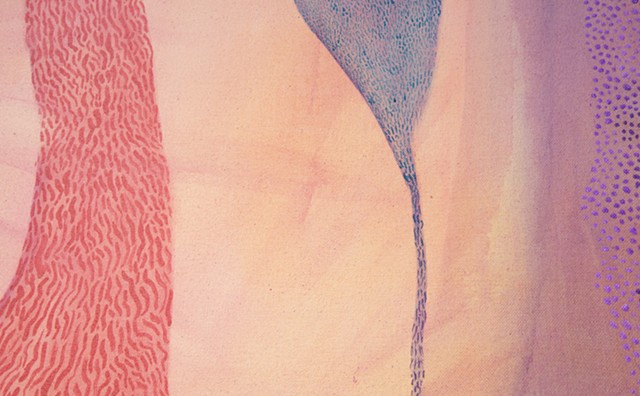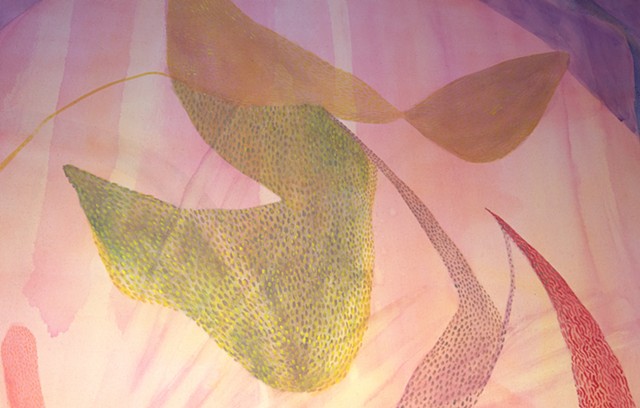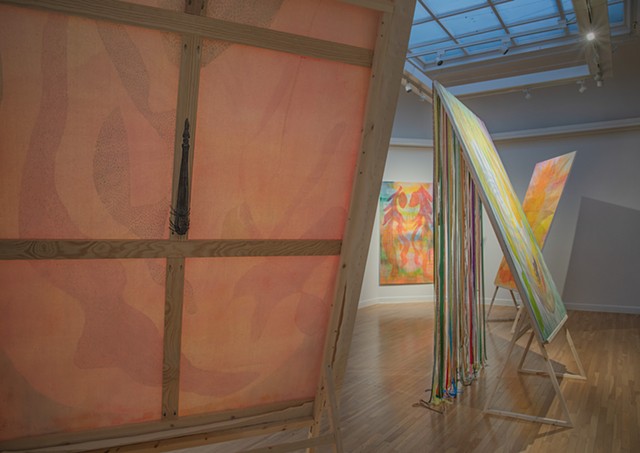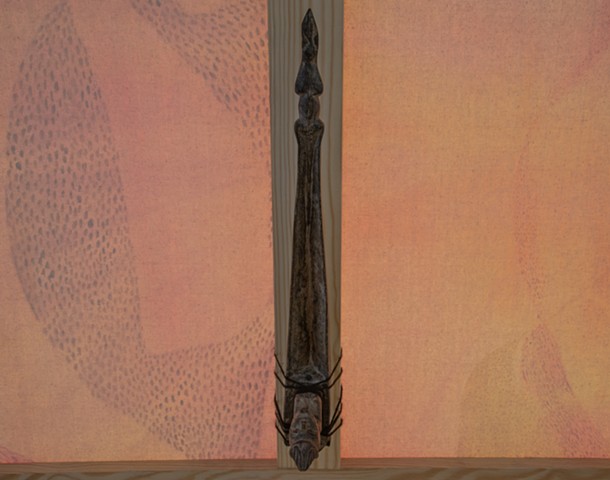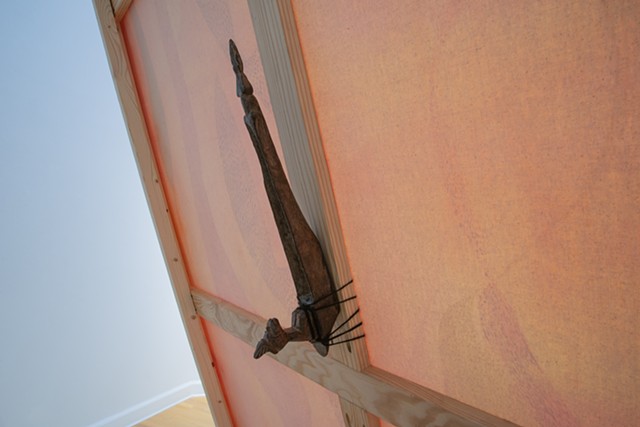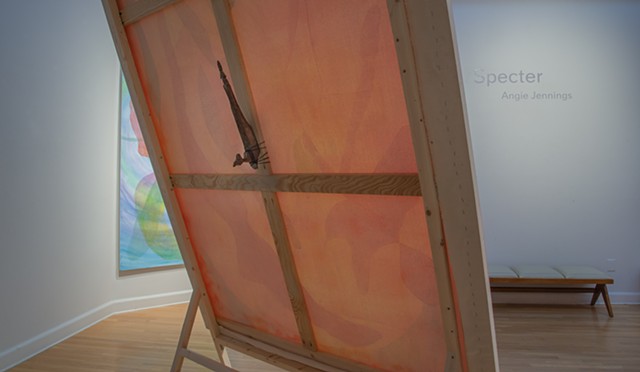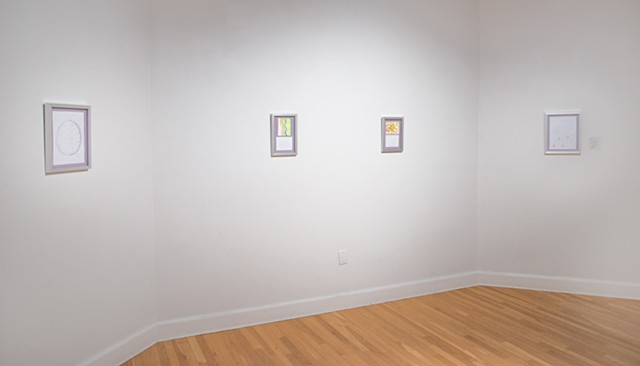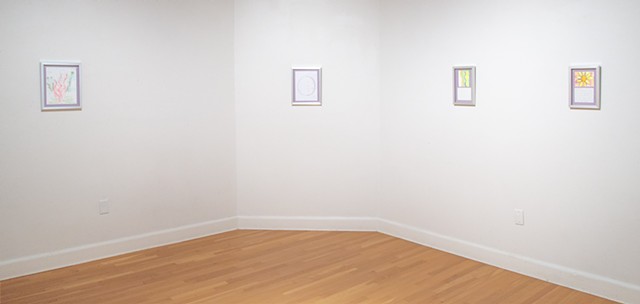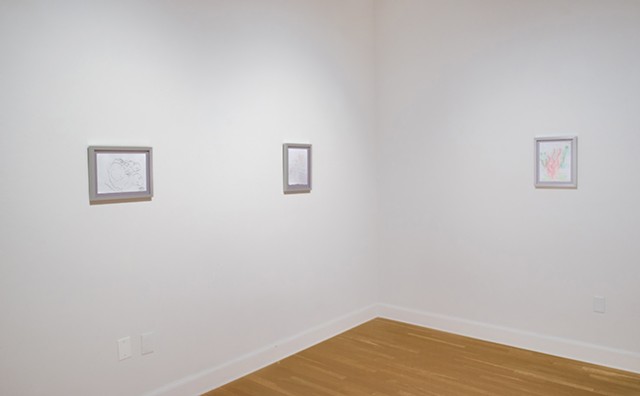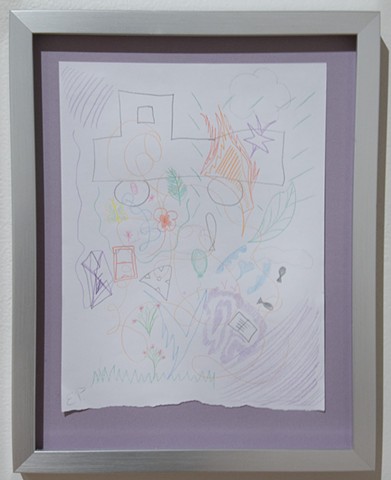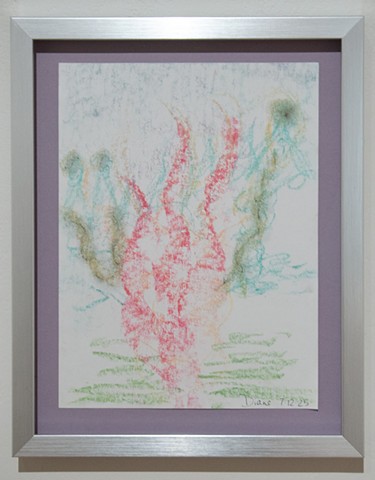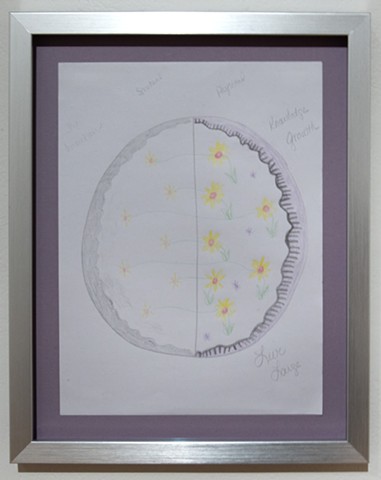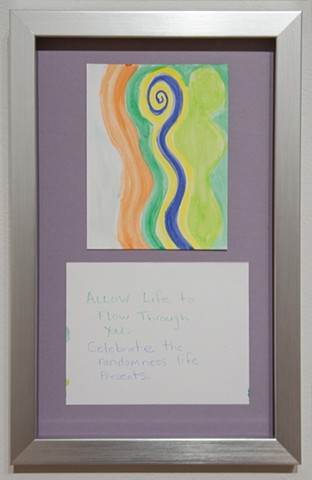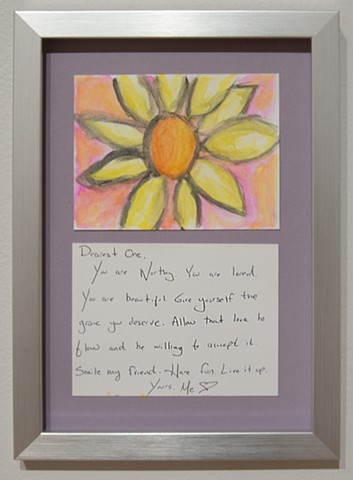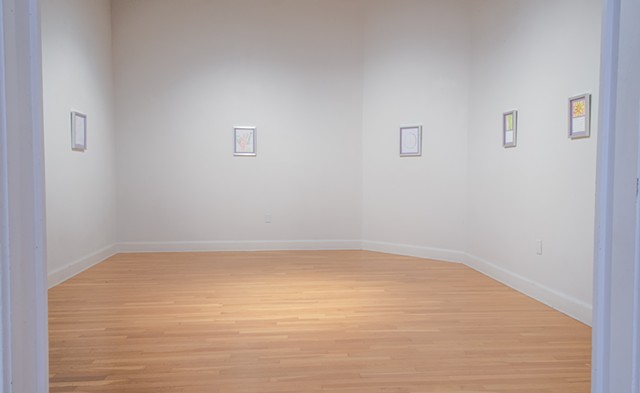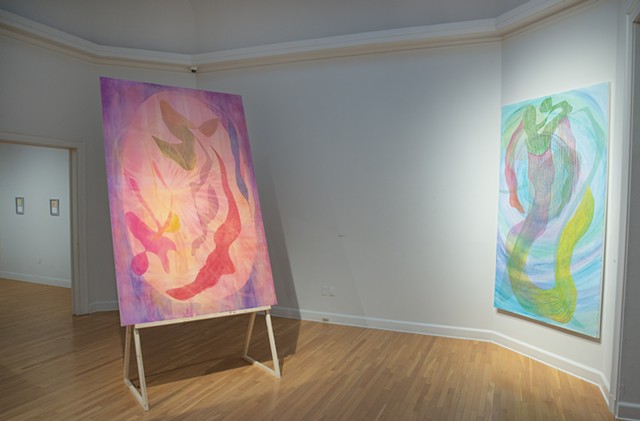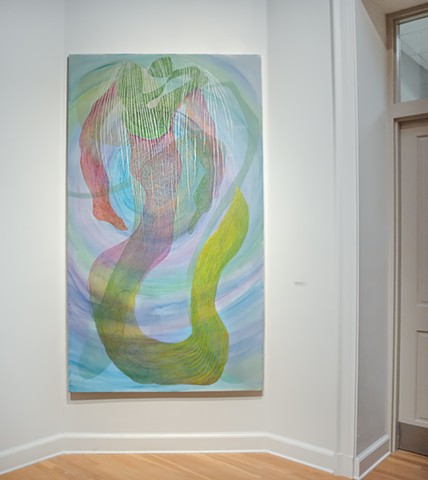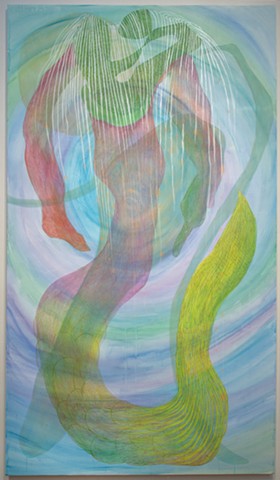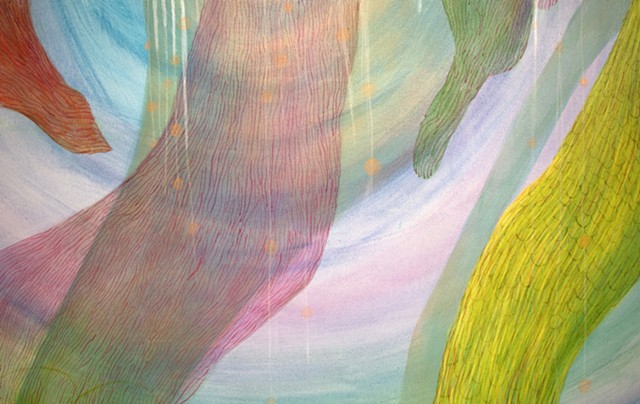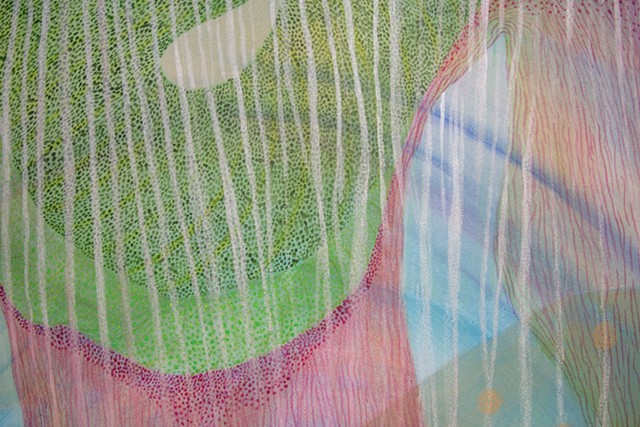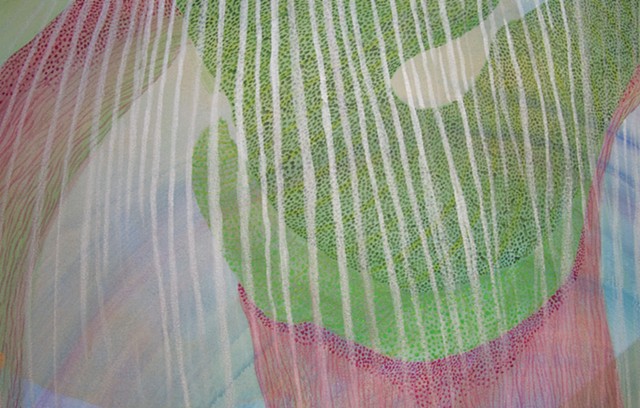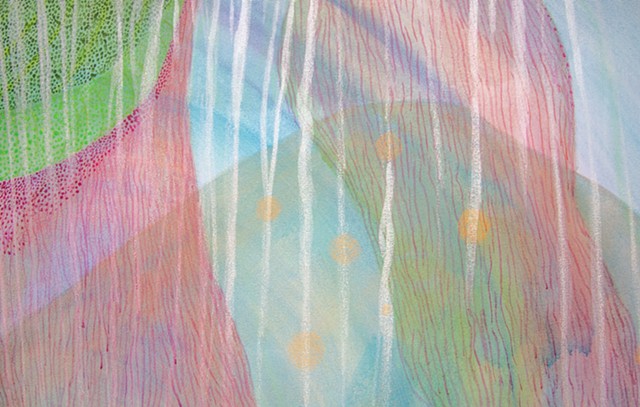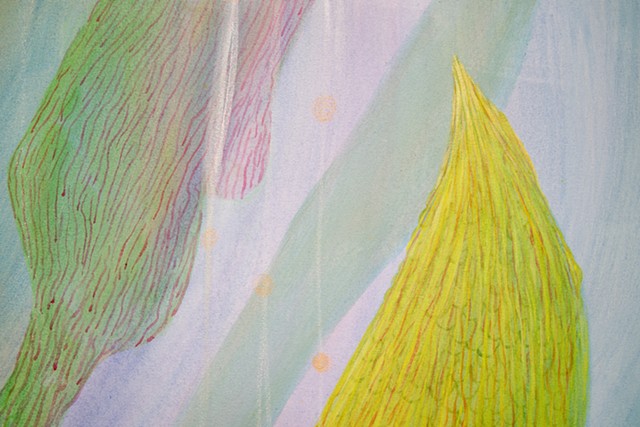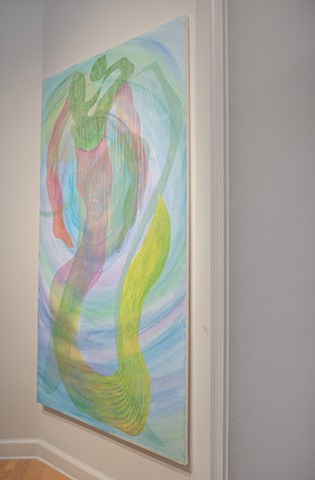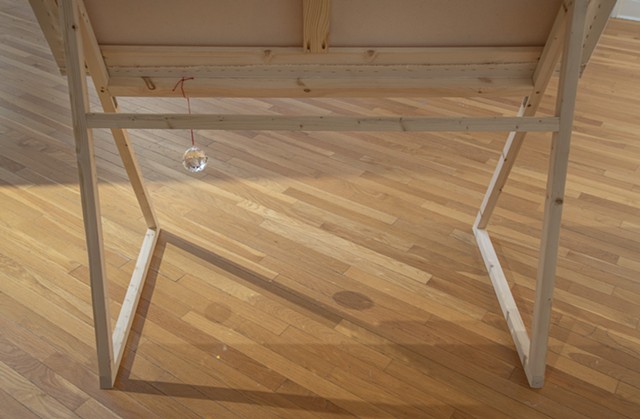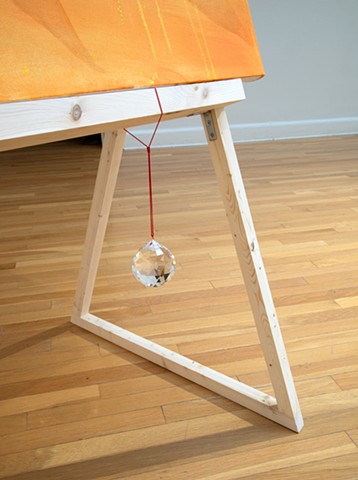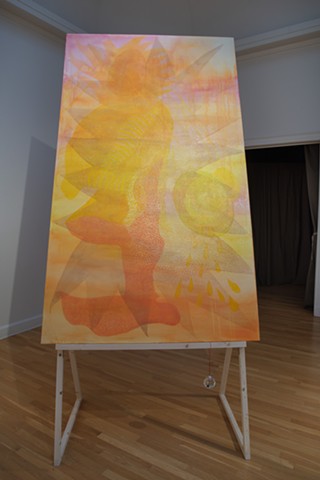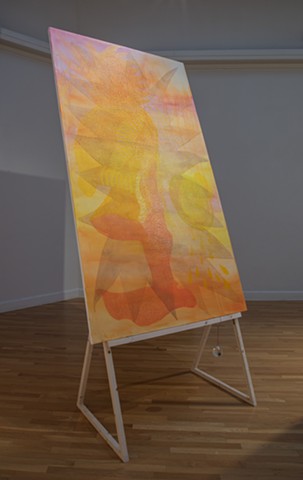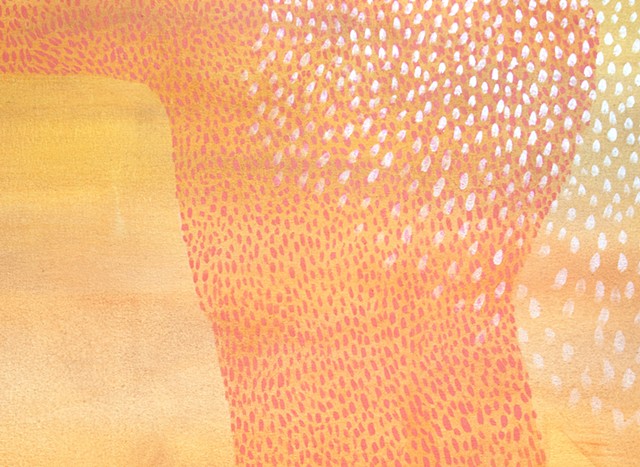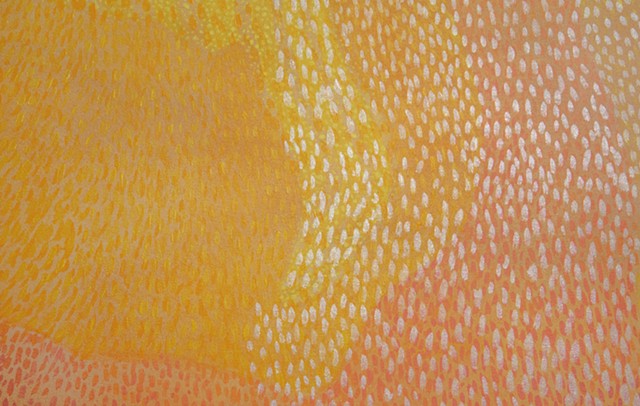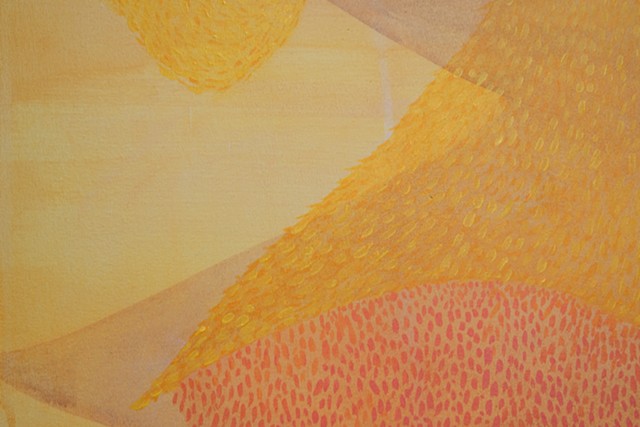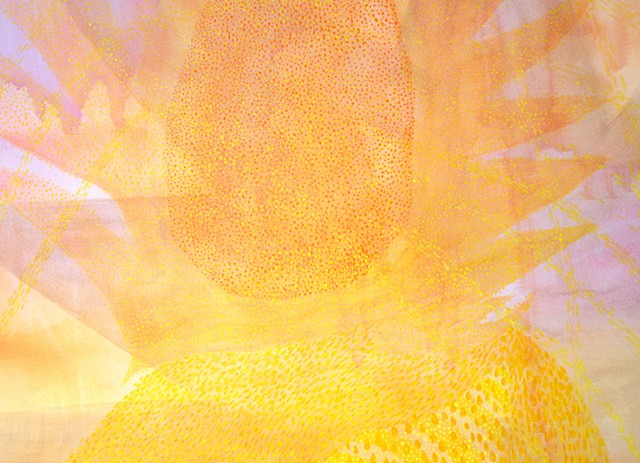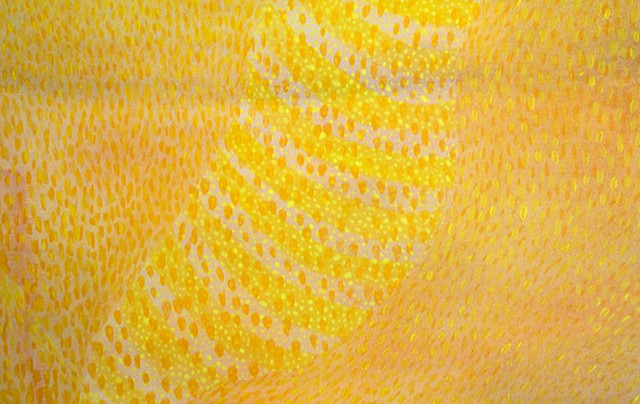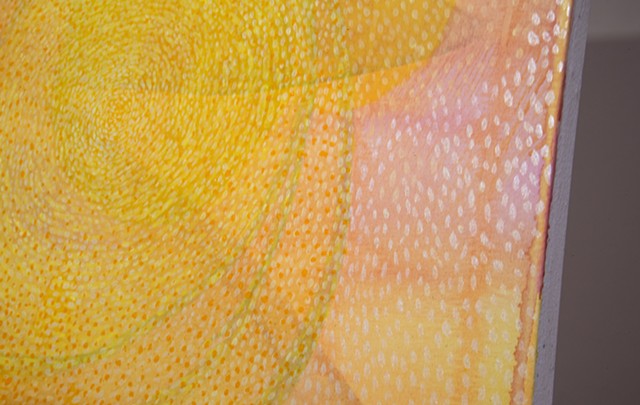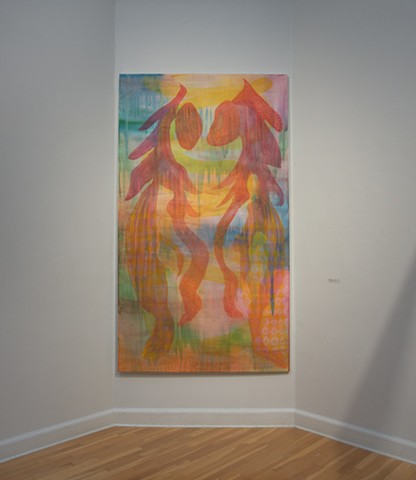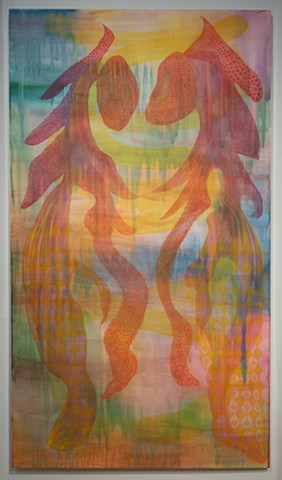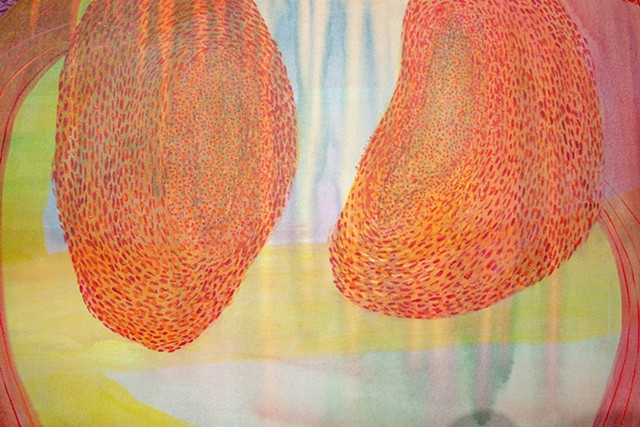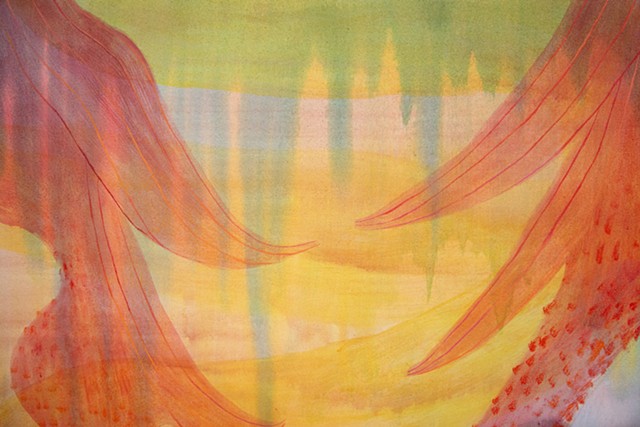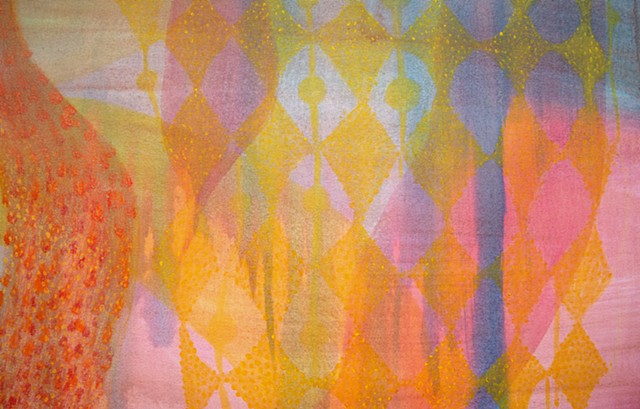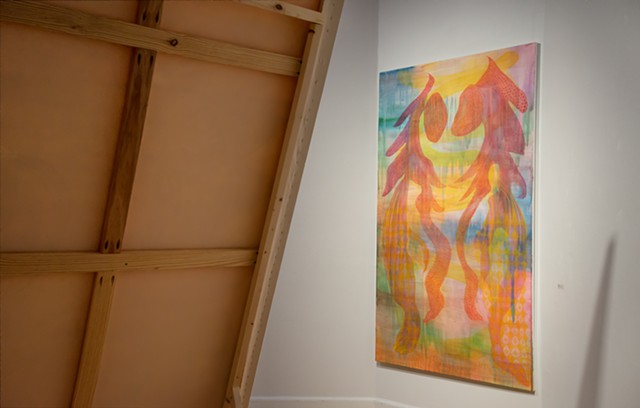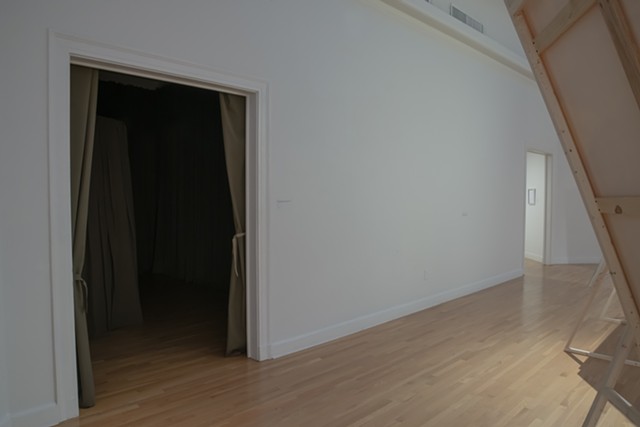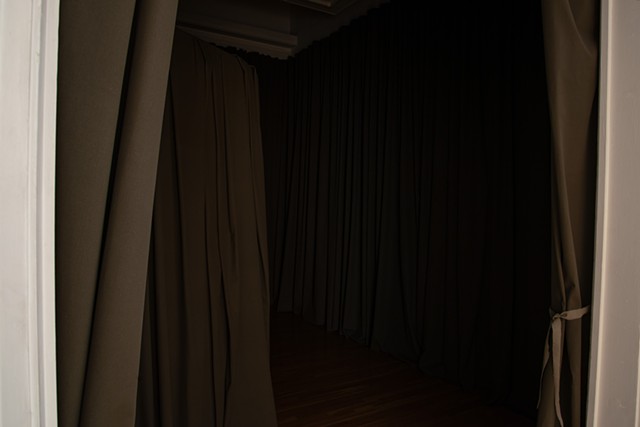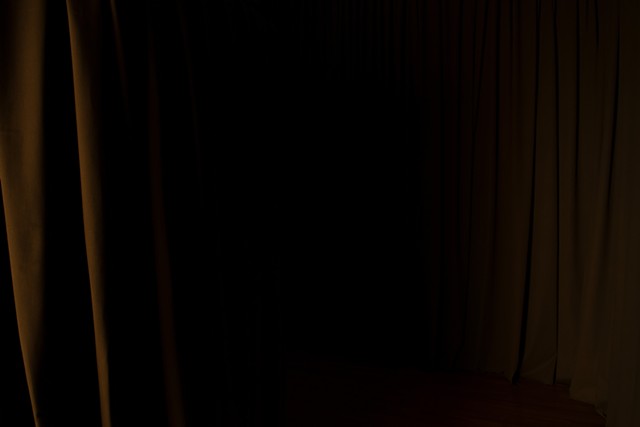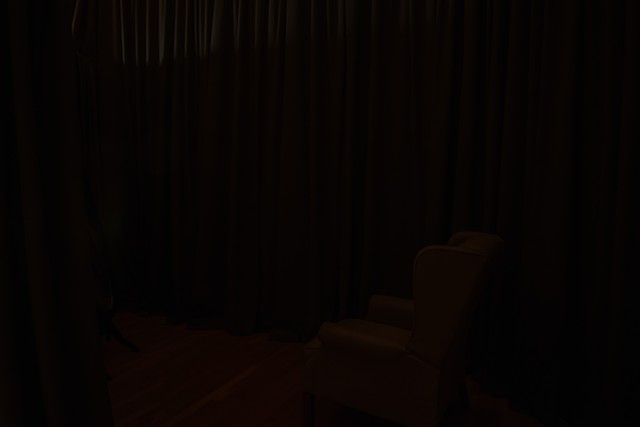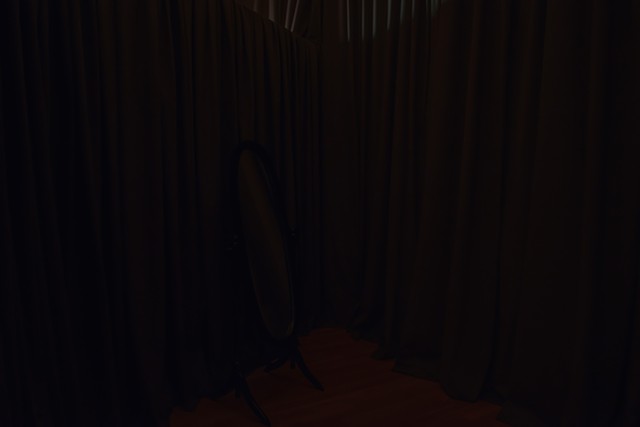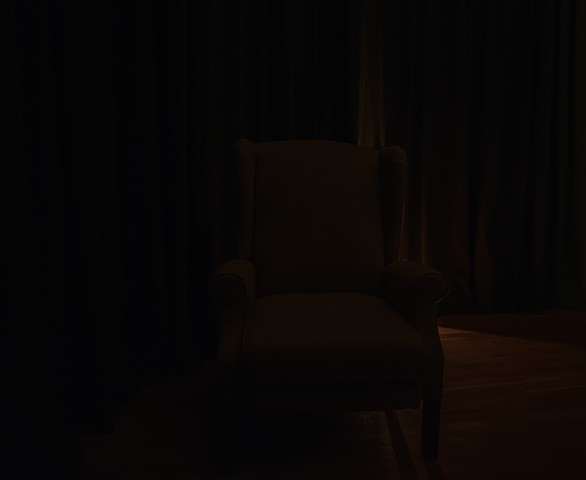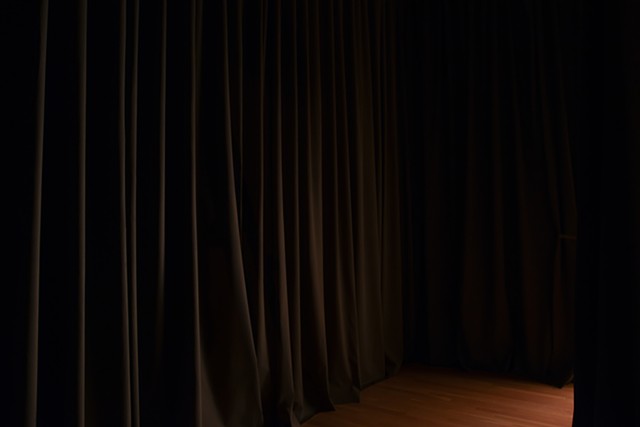Sepcter
Specter
Carroll Gallery, Tulane University
New Orleans, LA
September 30th - October 24th 2025
In this exhibition, Jennings situates visibility as it pertains to identity in dialogue with supernatural phenomena, amplifying processes of art-making that occupy multidimensional states of being, denoting formations of possibility and perspectives pertaining to spirit(s) and being.
The exhibition features three distinct bodies of work found throughout the galleries. Presented in the main gallery are new large-scale paintings made by scaling up processes of contour drawing, initially created through implementing approaches of automatism, often developing into semblances of figuration. Automatism, a process and term stemming from the European Surrealist movement, implements sentiments towards unlocking the subconscious mind, which is a state of being also used in mystic practices to connect with the divine.
Within the paintings, slow paces of mark making reveal imaginative large-scale spirit forms. The multiplicity of line types and approaches of pointillism reflect notions pertaining to theories of wave-particle duality, paramount to the visible spectrum and perceptions of light. Through these processes, the astral world is posited as surpassing the limits of human visibility. Paired with questioning scientific concepts of visibility, Jennings also contemplates the social paradox and tandem nature of being hypervisible and invisible, a circumstance often discussed in discourses seated in Black Critical Thought.
The three central paintings rest on wooden armatures residing within the round, in which the typically hidden sides are exposed. Through this presentation, Jennings wonders if the term double consciousness is at play, coupled with paradigms of existence upon the other side. W.E.B Du Bois, a prominent figure in African American history, coined the term double consciousness in his 1903 book, The Souls of Black Folk, describing it as a racialized phenomenon of experiencing a “twoness” in reference to how one perceives themselves through the lens of Blackness while at the same time through distorted hegemonic societal structures, also referred to as a veil. Here, double consciousness is illustrated through skewing conventions of display, allowing for processes of second sight to occur.
The power of invisibility and metaphors of the veil additionally led Jeninngs towards an investigation of psychomanteums, dark environments housing reflective surfaces utilized for practices of scrying or mirror gazing in efforts to communicate with the spirit world. Histories of psychomanteums stem from ancient Greece, repopularized in the 90’s by American philosopher and psychiatrist Raymond A. Moody through his research on the afterlife. In his book Reunions: Visionary Encounters with Departed Loved Ones, Moody details how one can make their own version of a psychomanteum, directions which Jennings utilized in the gallery. Here, viewers are invited to experience the psychomanteum by either sitting or standing and gazing into a mirror. This installation functions as a meditative space to both contemplate one’s perception and spirit.
In conjunction, Jennings presents her summer field research pertaining to mediumship and artmaking though displaying small scale drawings and letters made specifically for her by participants studying the practice of mediumship at one of the largest Spiritualist communities in the nation called Lily Dale, a gated community located about an hour south of Buffalo, NY established in 1879. The drawings created during these workshops were made with the practicing reader’s or medium’s belief that Spirit guided their fruition.
Within this exhibition, the circumstance of existing in-between worlds is amplified through a multiplicity of approaches, evoking a complex interconnected locus. Pointedly, the pursuit of transforming formations of invisibility into sites of power and transcendence is clear.
